Above Ground Structures
Applications for shotcrete in above ground structures include for elevated silos, swimming pools, basement walls, retaining walls, bridge abutments, etc.
The design of above-ground shotcrete structures should consider the stability, strength, serviceability, durability, appearance, fire resistance and other design requirements placed on the shotcrete.
Three types of reinforcement are commonly used in shotcrete structures:
- Unreinforced.
- Conventionally reinforced with mesh or bars.
- Fibre-reinforcement.
Unreinforced shotcrete may be used in applications such as in-fills between piles and rocks that primarily experience compression while in service. Other common unreinforced applications for shotcrete include drain pits and spoon drain.
Conventional reinforcement is commonly used in shotcrete members such as basement walls and battered slopes that have a regular rectangular geometry. Other applications may include swimming pools and rectangular in-fill walls. Conventional reinforcement has the advantage that it is widely available and easy to design for structural resistance. This type of reinforcement is most commonly used for traditional civil structural applications.
Fibre reinforcement is most commonly used in applications involving irregular geometry or overhead spraying. It has the advantage of fast placement and superior safety under unstable ground. Fibre reinforcement is sometimes used for uneven ground stabilisation in above-ground applications, but is most commonly used for underground civil ground stabilisation and mining. Fibres represent the predominant type of reinforcement used in shotcrete in Australia.
LINK: Concrete Institute of Australia - Shotcreting in Australia



